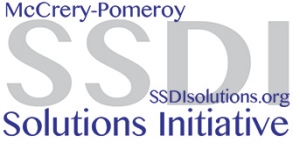June 23, 2018
Don’t miss out! RETAIN grants are a big opportunity
RETAIN is a five year and $100 million Federal Grant program that state agencies must nominally lead. However, the leadership team must be multi-stakeholder and include an organization that actually delivers hands-on medical care. Moreover, the states will probably end up contracting for delivery of the many services by individuals or organizations in the private sector. Proposals are due in ONE MONTH – so if you’re tempted to get involved, join our list-serv now and learn what you need to do! See more below.
RETAIN is the biggest opportunity for physicians who practice occupational medicine since the 1970’s — when NIOSH and OSHA were established. It’s also a huge opportunity for other professionals with expertise in preventing needless work disability during the early phase of the stay-at-work/return-to-work (SAW/RTW) process: the first few weeks and months of an injury/illness episode.
RETAIN requires states to get involved VERY EARLY in new injury and illness episodes among workers they haven’t had on their radar — and arrange provision of several kinds of services with which these agencies have had little/no familiarity. Most of the state agencies that received the RFP (and must lead RETAIN in their state) have been confused and caught flat-footed by it. They really need professionals with expertise at the interface between healthcare and the workplace to pitch in at several levels:
– to help NOW with project design and proposal writing
– once the project launches, to help oversee, manage and tweak the project at the top level,
– in individual cases, to deliver specific services during the first weeks and months of work interruption. (In fact, eligibility for RETAIN program services ends after 6 months of work absence.)
I’ve set up a free list-serv for everyone who is interested in the possibility of getting involved with their state’s RETAIN project. My personal goal is to help as many states as possible to recruit appropriate leadership teams and write successful bids. The project is so unusual, I don’t think there will be many. The Feds plan to accept EIGHT bids (from eight states).
JOIN US — if you’re an occ doc or SAW/RTW professional who is willing to wade in, introduce yourself to strangers, and then join the small team that will be developing your state’s overall project design and writing its proposal (bid) between now and July 23. Once you join the list-serv, go to our website and read the small number of earlier and information-filled emails that will get you oriented and on the right track. You’ll find links to the RFP itself along with many other resources.
To join the RETAINers list-serv, go to https://groups.io/g/RETAINers and click on JOIN THIS GROUP
NOTE: Think big. This is the beginning of an effort to knit together some holes in our social fabric to meet the needs of people who have been falling through the cracks. The Feds are looking for proposals that will help workers with new health problems — regardless of what caused them. The point is to help ANY worker for whom a new health condition is causing work interruption and, if the right things fail to happen, could threaten their job. Needlessly losing one’s livelihood and ending up on SSDI is a very poor outcome of a health condition — ESPECIALLY when it didn’t need to happen.
